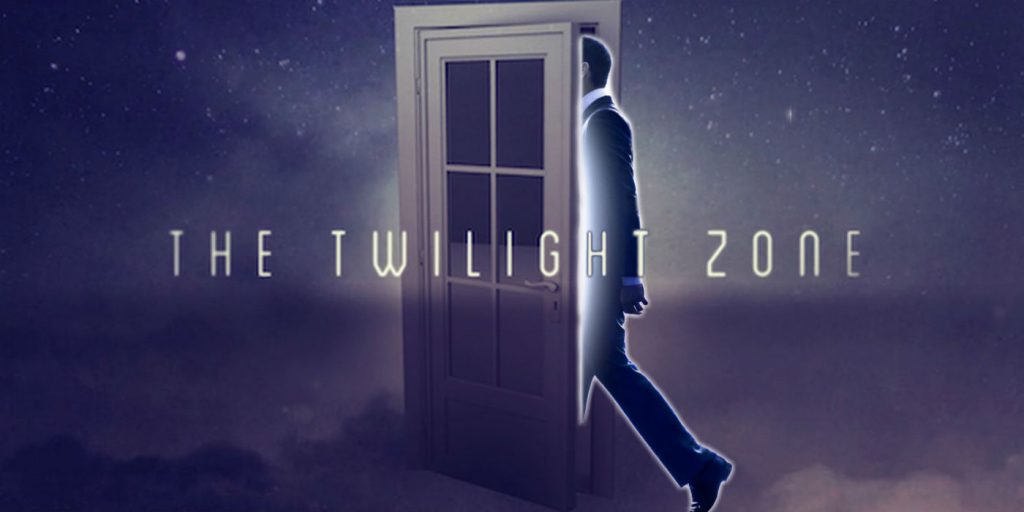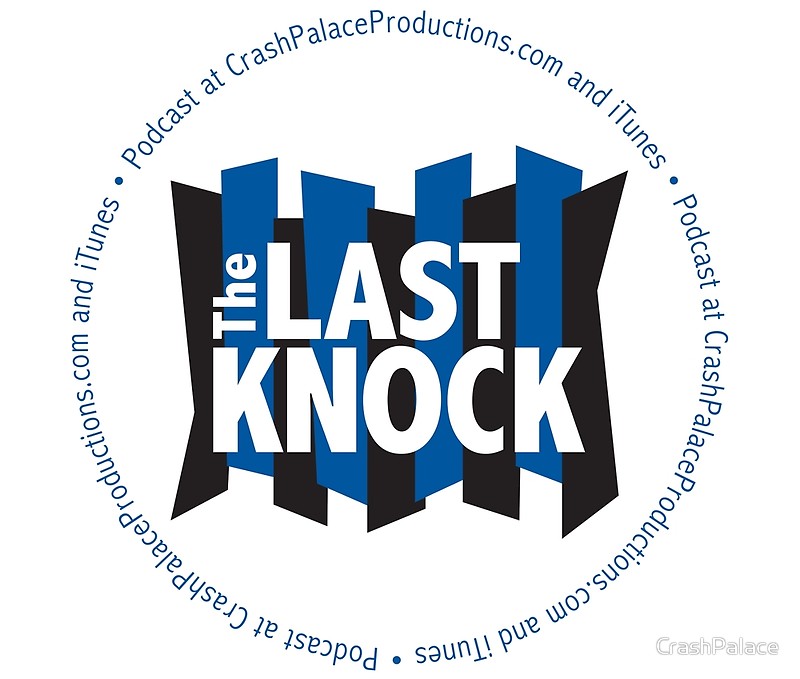
Peeleing the Layers of The Twilight Zone
NARRATOR:“
Meet Jordan Peele – a man whose proficiency with comedy and horror has led to a meteoric rise to Hollywood power. Tonight, Mr. Peele will face his greatest challenge – reviving a beloved television series whose sense of subversion and social conscience resonates to this day. Mr. Peele is about to learn that the dubious virtues of the pop-culture zeitgeist are no substitute for quality storytelling…in The Twilight Zone.”
Host Segments
Peele’s stocky build, soft-spoken monotone, and piercing eyes make for a contrast to Rod Serling’s imposing eyebrows and deadpan manner. While the host segments in the original series would rattle on with multisyllabic words and general literary richness, Peele’s monologues are short and to the point, providing an opening teaser and a closing summary using simplified language. Serling’s ten-dollar vocabulary has been junked, perhaps in concession to the impatient, “want-it-
now” mentalities of today’s streaming audiences. Which begs the question (worthy of its own episode, maybe): why bother with a new
Twilight Zone if it doesn’t attempt to match the intellectual proficiency of its original incarnation?
Episode 1 – “The Comedian”
Kumail Nanjiani blended comedy, drama, and pathos in
The Big Sick, and his appearances on
Portlandia conveyed an absurd hilarity. In other words, he’s the perfect lead for this somewhat drawn-out premiere. Desperate to connect with an apathetic audience, a stand-up comic takes the advice of his spectral hero (Tracy Morgan) and finds a shortcut to stardom – albeit with consequences. While the ending is telegraphed, Owen Harris’ direction keeps things moving, and the production design establishes the series’ affinity for encroaching architecture, super-slick surfaces, and specific lighting schemes.
(3 out of 5 stars)
Episode 2 – “Nightmare at 30,000 Feet”
As a journalist stuck on a redeye during a bad storm, Adam Scott brings his everyman demeanor to this reworking of the classic, Richard Matheson-scripted tale. The paranoia takes a different form in this rendition, and the plot catalyst – an MP3 player synced to a prophetic podcast – is an engaging device. Despite heavy CGI, director Greg Yaitanes (
Quarry) makes the airplane interior effectively claustrophobic, and Scott rabbit-trails down a paranoid spiral that finds a cruel yet well-rendered ellipsis in its final moments.
(3 out of 5 stars)
Episode 3 – “Replay”
While driving her film-student son (Damson Idris) off to college, a mother (Sanaa Lathan) – equipped with a vintage VHS camcorder – runs afoul of a white policeman (Glenn Fleshler) who’s hell-bent on enacting violence against them. The catch? Once the camcorder records an incident, time “rewinds” with the tape, allowing a chance to alter their fate. A familiar yet promising concept is smothered by its overt messaging (an unsubtle “Black Lives Matter” diatribe), a glut of pop-culture references (Ryan Coogler and
Black Panther get mentioned, but not Melvin Van Peebles or Spike Lee), and a depiction of law enforcement that appears to be going somewhere…until it doesn’t. A more thoughtful episode would’ve found a way to integrate the police as something more than – or at least more
complicated than – trigger-happy boogeymen. In the end, “Replay” opts for the heavy-handed and patronizingly obvious.
(1.5 out of 5 stars)
Episode 4 – “A Traveler”
This tale of a culturally alienated Inuit policewoman (Marika Sila), her whitebread Captain (Greg Kinnear), and a stranger (Steven Yeun) who inexplicably appears in a holding cell on Christmas Eve, does too much thematic front-loading. Glen Morgan’s (
The X-Files) script, which nudges in a “The Monsters Are Due on Maple Street” direction, doesn’t venture far enough from its mustache-twirling setup. The too-busy plot includes threads about shady dealings with Russia (an unsubtle wink to the original series’ Cold War allegories, and the election-tampering controversy of today) and local political intrigue in the microscopic town of Ignaak, Alaska. Intriguing themes of identity and loyalty fall by the wayside in favor of alien-invasion stuff. That said, the performances of Sila, Kinnear, and Yeun are excellent, and Ana Lily Amirpour’s (
A Girl Walks Home Alone at Night) direction is slickly compelling.
(2.5 out of 5 stars)
Episode 5 – “The Wunderkind”
If you can suspend disbelief regarding the age restrictions to be President of the United States, this episode concocts a premise that is effectively savage in its satire. What would happen if a 10-year old (Jacob Tremblay) could capture the hope of a jaded public and be elected to the highest office in the land? Exploring the idealism (who
isn’t tired of the same old lines from wealthy folks looking for your vote?) and cynicism (the fine print that accompanies all things that are “too good to be true”) of the shit show that is American politics leads to a bizarre catharsis. The framing device culminates in a good punchline, and John Cho’s patented stoicism is used to compelling effect; whenever he and Tremblay share the screen, it’s a tightrope-walk of dueling egos that recalls elements of “It’s a Good Life.”
(3.5 out of 5 stars)
Episode 6 – “Six Degrees of Freedom”
Nuclear missiles head toward the U.S. while a group of astronauts are minutes away from lift-off to Mars. But is the mission what it seems, or is our group trapped in an elaborate simulation? (And more important, do we care?) With heavy visual and thematic nods to
2001 (the ship’s supercomputer) and
The Shining (isolation = madness), this episode is a clunky mix of countdown-clock asides and jarring character moments. The overall execution is questionable, as two of the actors – DeWanda Wise and Jessica Williams – look so similar that it’s hard to discern who’s who at times (a doppelganger subplot would’ve justified this, but no such luck). An explicit reference to Orson Welles’ “War of the Worlds” broadcast is endemic of one of the major problems with this incarnation of
Twilight Zone – that, while ostensibly aiming for a “smart” crowd, its presentation insists that the audience can’t connect the dots unless they’re hit upside the head with a sledgehammer.
(1.5 out of 5 stars)
Episode 7 – “Not All Men”
This episode begins with some dumb, “don’t touch the meteor” stuff that also caused dire consequences for characters in
The Blob and
Slither (among many others). And the topic of men being transformed into amoral, homicidal lunatics was previously explored in Alice Sheldon’s short story, “The Screwfly Solution” (later turned into a flawed yet potent episode of Showtime’s
Masters of Horror). But quality pulp often transmutes clichés to deliver fresh surprises, and “Not All Men” has the advantage of an appealing cast: Taissa Farmiga (
American Horror Story) and Rhea Seehorn (
Better Call Saul) portray sisters looking to escape the testosterone-fueled apocalypse that descends on their small town. Meanwhile, Ike Barinholtz does a commendable job of channeling his inner Jack Nicholson. The denouement, in which a minor character delivers a very profound line, is well-done. Even if you have to wade through forced mentions of “mansplaining” and “fuck your feelings” (seriously), this episode works well enough.
(3 out of 5 stars)
Episode 8 – “Point of Origin”
This episode begins and ends with ice cream imagery. Couldn’t you and your loved ones go for some ice cream right now? Seriously. Life is short, and it would be time better spent than watching this muddled mix of immigration parable and
The Handmaid’s Tale.
(1 out of 5 stars)
Episode 9 – “The Blue Scorpion”
Those who make it this far will be rewarded with an episode that comes closest to capturing the magic of the original series. Chris O’Dowd plays an anthropology professor mourning the suicide of his pacifist father; in resolving his father’s affairs, he comes across a unique handgun with the titular image emblazoned on the grip. As the story progresses, his fascination with the firearm parallels his escalating paranoia toward the outside world. Glen Morgan’s script begins with a simple conceit, and keeps focused on O’Dowd and his various conflicts (internal and external) throughout. Peele’s closing monologue incorporates some cultural commentary that perfectly underlines the character’s journey. Easily the highlight of this season.
(3.5 out of 5 stars)
Episode 10 – “Blurryman”
The title could very well be alluding to the undercooked nature of this iteration’s worst episodes, so it is with great and painful irony that the plot centers around a writer for –
wait for it– the new
Twilight Zone. Said writer (played by the overwhelmingly likable Zazie Beetz) is a bundle of ill-defined traits and motivations, to the point where Alex Rubens’ setup (a
Twilight Zone episode
within a
Twilight Zone episode!) comes off as a promising idea that quickly crash-lands as a crass, clueless meta joke. Not helping matters is the similarity of the titular character to last year’s horror non-icon,
Slender Man. But the ultimate slap in the face comes near the end, when an old friend steps out of the shadows to utter some infuriating lines before segueing into a veiled, fingers-crossed pledge that Season 2 will be better,
promise.
(1 out of 5 stars)
NARRATOR:“
The realm of reboots and remakes, where a return to the well can complement or brighten a source, but never diminish it. A place where incendiary technique is no substitute for the universality of basic human emotion. Beneath an icy surface of high production values, the self-conscious nature of those who would venture to stand on the shoulders of giants is met with uneven results…in The Twilight Zone.”
The Plot Sickens: How about a
Midsommar review from Jonny Numb at the end of Summer?
Crash Analysis Support Team
Jonny Numb

Jonny Numb (aka Jonathan Weidler), despite aspirations to the contrary, kills nothing but time on
Twitter and
Letterboxd @JonnyNumb. He also co-hosts THE LAST KNOCK podcast with Billy Crash.
Get your
Crash Palace and
The Last Knock gear!
THE LAST KNOCK horror podcast is a Crash Palace Productions’ featured show. Besides this site, you can find THE LAST KNOCK on iTunes with new shows posted every other Sunday at 9 PM ET.
Crash Palace Productions website design and creation from
Brian Yount Digital Enterprises with banner and THE LAST KNOCK art from
Palko Designs.
(
The Twilight Zone image from YouTube.)
 Jonny Numb (aka Jonathan Weidler), despite aspirations to the contrary, kills nothing but time on Twitter and Letterboxd @JonnyNumb. He also co-hosts THE LAST KNOCK podcast with Billy Crash.
Get your Crash Palace and The Last Knock gear!
THE LAST KNOCK horror podcast is a Crash Palace Productions’ featured show. Besides this site, you can find THE LAST KNOCK on iTunes with new shows posted every other Sunday at 9 PM ET.
Crash Palace Productions website design and creation from Brian Yount Digital Enterprises with banner and THE LAST KNOCK art from Palko Designs.
(The Twilight Zone image from YouTube.)
Jonny Numb (aka Jonathan Weidler), despite aspirations to the contrary, kills nothing but time on Twitter and Letterboxd @JonnyNumb. He also co-hosts THE LAST KNOCK podcast with Billy Crash.
Get your Crash Palace and The Last Knock gear!
THE LAST KNOCK horror podcast is a Crash Palace Productions’ featured show. Besides this site, you can find THE LAST KNOCK on iTunes with new shows posted every other Sunday at 9 PM ET.
Crash Palace Productions website design and creation from Brian Yount Digital Enterprises with banner and THE LAST KNOCK art from Palko Designs.
(The Twilight Zone image from YouTube.)

